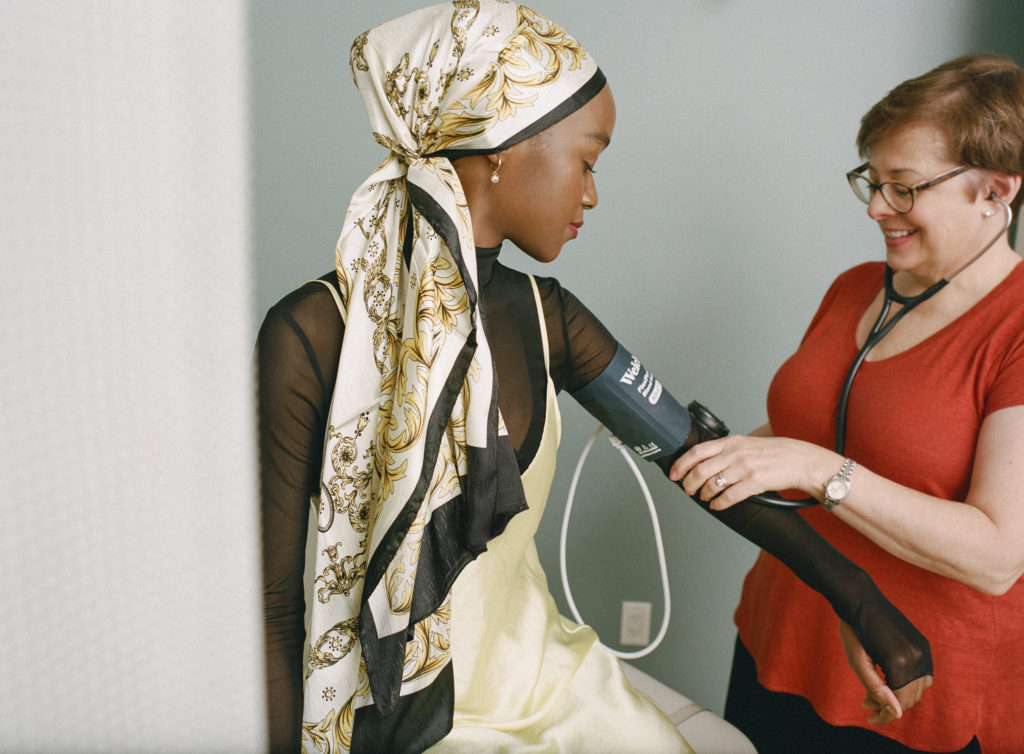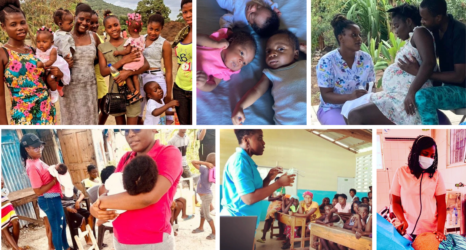Over 50 years after the signing of the Equal Pay Act, the gender pay gap remains too wide—and it’s more recently become fodder for dinner table conversation across the country. But in the era of #MeToo, the Women’s Marches and the pink wave, it’s time to take conversations about sexism and gender disparities even further.
It’s time to talk about the gender pain gap.

Women’s bodies are frequent sites of discourse—when it comes to our cellulite, “summer bodies,” and skin and hair care routines—but we don’t talk enough about our menstrual cycles or painful sex, Even though, according to ACOG, 3 out of 4 women will experience pain with intercourse at some stage in their life. Women have been conditioned from an early age, instead, to believe that these are shameful topics not to be shared, and encouraged to hide our tampons up our sleeves on the way to the bathroom and come up with “cute” euphemisms for menstruation.
When women do talk about their pain, it’s routinely dismissed. Securing a diagnosis for most gynecological conditions is a marathon sport. Endometriosis, which affects 200 million women, has a shocking diagnosis lag of eight to 11 years. Half of women with Polycystic Ovary Syndrome (PCOS)—which affects one in 10 women, is the leading cause of infertility and is even linked to Type 2 Diabetes, anxiety and depression, obesity and endometrial cancer—go undiagnosed.
Even women who do get a diagnosis face a lifetime of pain—because there is no cure for either condition, and research funding to find one is limited. Endometriosis received a paltry $7 million from the NIH in 2018; PCOS isn’t even listed as receiving funding in the NIH database.
Barriers to the treatment options that are available are high. The most effective treatment plans require a multidisciplinary team that are often not covered by insurance, leaving patients in debt or without access. Insurance companies argue that this is justified by a lack of supporting clinical research.
It’s a vicious cycle, and these two conditions aren’t the only ways in which women become trapped in it. There remain a slew of women’s health issues that are underfunded and lack awareness—and medical sexism remains rampant. Most of the medications on the market today were developed without any consideration for women’s bodies: The NIH did not mandate that all pre-clinical research include female subjects until 2016, and the FDA only stopped excluding women from trials in 1993.
The impact of this widespread sexism is felt throughout the global economy. A 2011 study conducted in ten different countries found that each woman with Endometriosis lost on average 10.8 hours of work weekly. Ernst and Young released a report in 2019 declaring that Endometriosis costs the Australian economy an incredible $7.4 billion a year in lost productivity.
These health challenges have educational and economic ramifications for far too many patients. Women suffering from a condition like Endometriosis or PCOS might search for a diagnosis and navigate treatment options for years—all the while missing days of school, work and other important events due to debilitating pain. They might be forced to give up or are fired from a dream job because of the strain of untreated symptoms; minimizing or hiding those symptoms so as not to raise red flags. They are making career choices based on an illness, not on personal ambitions or goals.
In her 2018 book Ask Me About my Uterus, Abby Norman initially defies the odds as a newly emancipated minor from an abusive home by earning a scholarship to Sarah Lawrence. She desperately wants to stay at the only place she’s ever felt at ease—but as doctors continue to dismiss her pain and misdiagnose her Endometriosis, she can no longer keep up with classes and is forced to quit college and dancing.
For transgender patients like Cori Smith, the situation is even dire. Before his transition, Cori suffered a painful road to diagnosis. As a trans man, he is struggling to access the treatment he needs with his symptoms often being dismissed by doctors, and in the meantime his chronic pain prevents him from working full-time.
People facing down the disparities in access to care and options for treatment like Cori and Abby can’t overcome their career obstacles by “leaning in.” They need flexible working arrangements that don’t come at the cost of a lower salary, wider recognition of their so-called “invisible illnesses” and a healthcare system that supports them.
We can’t close the gender wage gap without fighting the gender pain gap. And until we do, too many women will continue to suffer the consequences—at the doctor’s office and in their professional lives.





